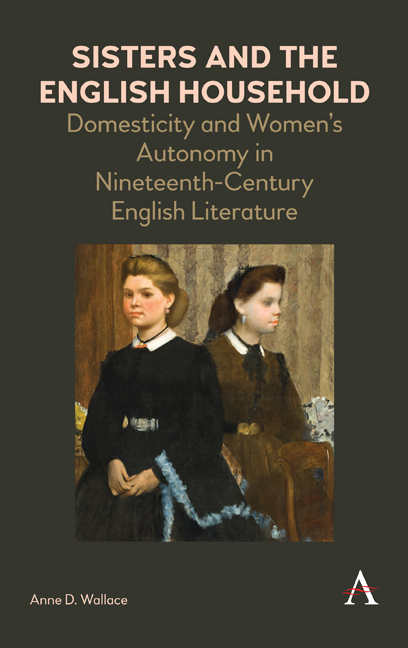 Sisters and the English Household
Sisters and the English Household Book contents
- Frontmatter
- Dedication
- Contents
- Acknowledgments
- Introduction
- 1 Alternative Domesticities: Revaluing the Sibling in the House
- 2 “Out into the Orchard”: The Departure of the Sibling in the House
- 3 The Problem of the Sister in the House
- 4 George Eliot's Natural History of the English Family
- Notes
- Works Cited
- Index
4 - George Eliot's Natural History of the English Family
Published online by Cambridge University Press: 29 May 2019
- Frontmatter
- Dedication
- Contents
- Acknowledgments
- Introduction
- 1 Alternative Domesticities: Revaluing the Sibling in the House
- 2 “Out into the Orchard”: The Departure of the Sibling in the House
- 3 The Problem of the Sister in the House
- 4 George Eliot's Natural History of the English Family
- Notes
- Works Cited
- Index
Summary
Readers of nineteenth- century British novels know that writers’ and readers’ interest in sibling relations was not confined to the topical novels embedded in the Marriage with a Deceased Wife's Sister controversy. Regardless of their explicit thematic foci, novels of this period characteristically engage the wobbling, uncertain development of domestic ideologies at the crux of sibling relations. A particularly revealing variation of this engagement is the replacement of the adult unmarried sister in the house, the figure that carried the weight of public discourse about legal familial identities, with an adult unmarried brother. Characters like Tom Pinch (Dickens's Martin Chuzzlewitt, 1843), Phineas Fletcher (Craik's John Halifax, Gentleman, 1856), and Mordecai Cohen (Eliot's Daniel Deronda, 1876) typify this variation: feminized as gentle and in delicate health, paired with blood or metaphorical siblings, these adult brothers take the place of an unmarried sister in a married sibling's house. Theoretically these male characters should not represent a threat to ideal domesticity of any sort, their rightful autonomy being fully authorized in cultural as well as legal and economic terms. Yet their novelistic trajectories suggest otherwise: rendered incapable of labor, made dependents in their siblings’ homes, and, in more than one case, killed off, the fate of the unmarried adult brothers in these fictions points to no less pressing a need for their expulsion from the ideal household than the need excited by their more obviously “dangerous” sisters.
None of these substitutions of brother for sister is uncomplicated, nor is any of them wholly consistent with one “side” of the field of fluctuating domestic ideals. In the case of Phineas Fletcher, for instance, his relationship with the eponymous hero of Craik's John Halifax, Gentleman is marked by womanly qualities on both sides: Phineas is gentle, invalided, bookish, but John is physically beautiful, and it is John who dies at the novel's end. The idealized love of the two men (compared in the novel to the love of the Biblical Jonathan and David) is further complicated by the death of one metaphorical brother, and with him, the sibling household. As we would expect, then, the replacement of sister with brother, and the brother's subsequent elimination from the household, functions as another template upon which alternative domesticities may be projected, mixed, and explored.
- Type
- Chapter
- Information
- Sisters and the English HouseholdDomesticity and Women's Autonomy in Nineteenth-Century English Literature, pp. 127 - 174Publisher: Anthem PressPrint publication year: 2018


